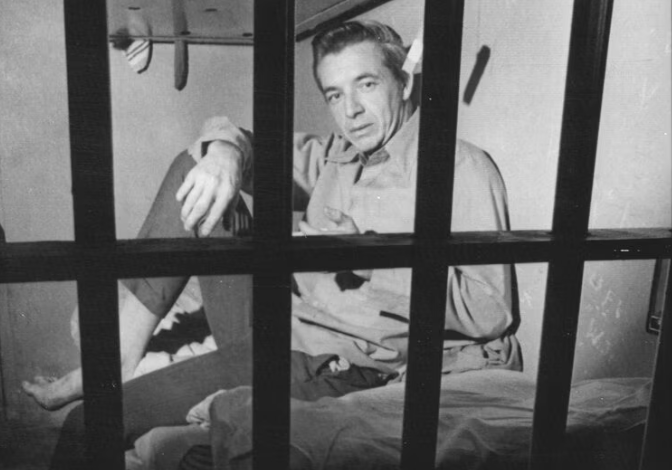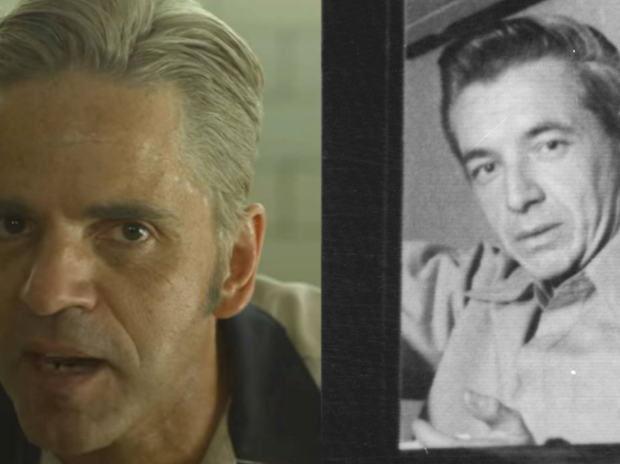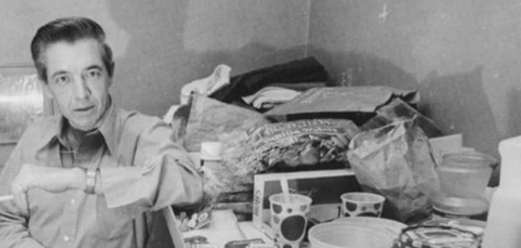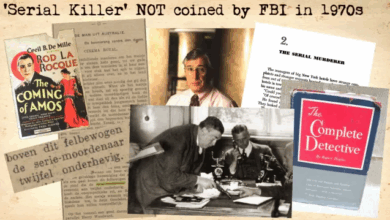William Pierce Jr.: The Serial Killer Who Killed for a Dollar

William Pierce Jr.: The Serial Killer Who Killed for a Dollar
In the early 1970s, a terrifying wave of violence swept across the American South, leaving a trail of seemingly senseless murders. The victims varied in age, race, and gender, but one chilling thread linked them: they had all crossed paths with William Henry Pierce Jr., a man who would later be dubbed “The Killer Who Murdered for a Dollar.” Over a span of just one year, Pierce killed at least nine people, though investigators believe the real number could be higher.
His motivations weren’t rooted in rage, revenge, or sexual gratification, as is typical with many serial killers. Instead, Pierce killed for the most trivial of gains: pocket change, a car, or even just to silence a witness. His crimes shocked law enforcement not only for their brutality, but for the utter lack of remorse and humanity behind them.

Early Life: A Troubled Beginning
William Henry Pierce Jr. was born in 1931 in rural South Carolina, into a life of poverty and dysfunction. His childhood was marked by instability and neglect. Reports from later psychiatric evaluations suggest Pierce suffered from intellectual disabilities and may have experienced head trauma in his youth. He struggled in school and had trouble forming stable relationships.
By his teenage years, Pierce had already fallen into a life of petty crime. He was arrested multiple times for burglary, arson, and theft. Though never diagnosed with a severe mental illness, evaluations would later reveal signs of antisocial personality disorder and an almost complete lack of empathy.
His criminal behavior escalated over the years. By the 1960s, Pierce was serving time in prison. In 1970, he was released on parole—a decision that would have deadly consequences.
A Trail of Murder
Once free, Pierce began drifting through the southeastern United States, mainly Georgia and South Carolina. Between January 1971 and March 1971, he embarked on a violent killing spree. His victims ranged from elderly women to teenage girls, and his motives were often as minimal as stealing a few dollars or eliminating a potential witness to another crime.

Notable Victims
-
Margaret “Peg” Cuttino (13): One of Pierce’s first known victims, she was the daughter of a prominent South Carolina state senator. Her body was found beaten and strangled. The murder sparked a high-profile investigation and public outrage.
-
Jeanette Franklin (17) and Joyce Thrift (15): These two girls were abducted and killed in separate incidents. Pierce offered rides to the teens before brutally murdering them and discarding their bodies in isolated areas.
-
Shirley Ann Foster (23): A young woman who encountered Pierce while trying to help him after he pretended his car had broken down. She was raped and murdered.
-
James B. Howard (60) and Marian P. Kay (51): A married couple killed in their home, apparently after Pierce broke in to rob them.
In total, Pierce was ultimately convicted of nine murders, but authorities suspect he may have killed up to 13 people during his brief but intense reign of terror.
The “Dollar Killer” Nickname
What made Pierce especially disturbing was the insignificance of his motives. In many cases, he killed simply to rob his victims of a few dollars, a purse, or a car. There was no elaborate planning, no specific victim profile, and often no reason at all. When questioned by police, Pierce’s chilling response to why he murdered was often along the lines of, “I needed the money,” or “They saw me.”
This disregard for human life earned him the grim nickname: “The Killer Who Killed for a Dollar.” His lack of emotion during confessions and interviews stunned both investigators and the public. There was no remorse—only apathy.
Investigation and Capture
Pierce’s downfall came after a multi-state manhunt. Investigators began to connect the dots between murders across Georgia and South Carolina. Similar methods of strangulation, blunt force trauma, and body disposal began to paint a pattern. Witnesses provided descriptions of a suspicious man seen near some of the victims’ last known locations.
In March 1971, Pierce was finally arrested after attempting to pawn items stolen from one of his victims. The police found damning evidence linking him to multiple murders. Under interrogation, he confessed to nine killings, often describing the crimes in cold, detached detail.
Despite efforts by his defense to argue mental incompetence, Pierce was declared fit for trial.
Trial and Sentencing
William Pierce Jr. was tried and convicted in multiple jurisdictions, resulting in several life sentences. While some prosecutors pushed for the death penalty, the courts ultimately sentenced him to life imprisonment without parole, citing his mental deficiencies and the complexity of trying capital punishment cases across state lines.
Pierce spent the remainder of his life in prison in Georgia, where he died in 2020 at the age of 88. He never showed remorse for his actions, never apologized to the families of his victims, and never explained why he committed such heinous crimes beyond superficial excuses.
Legacy and Psychological Profile
Pierce’s case is a haunting example of a missionless serial killer—one who kills not out of obsession, compulsion, or ideology, but out of opportunity and apathy. Criminologists have studied his case to understand how sociopathic tendencies and low-level intelligence, when combined with poverty and a lifetime of crime, can manifest in extreme violence.
Unlike notorious killers like Ted Bundy or John Wayne Gacy, who often manipulated or lured victims with charm and calculation, Pierce was impulsive and opportunistic. His violence was unplanned, indiscriminate, and disturbingly casual.
His crimes also highlighted flaws in the parole and prison system. Many questioned how a man with such a long criminal history had been released from prison in the first place, and how oversight had failed to prevent him from killing again.

Conclusion
William Pierce Jr. was not the most famous or sophisticated serial killer in American history, but he was certainly one of the most ruthless and senseless. He didn’t kill for passion, ideology, or sexual desire—he killed for a dollar, a ride, or to avoid being identified. His story is a grim reminder that evil does not always wear a mask of mystery; sometimes, it walks among us in the form of a man with empty eyes and a shallow excuse.





